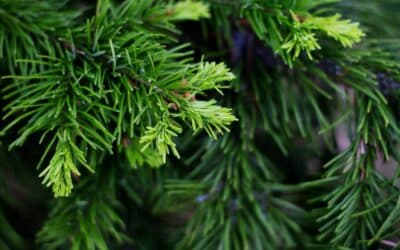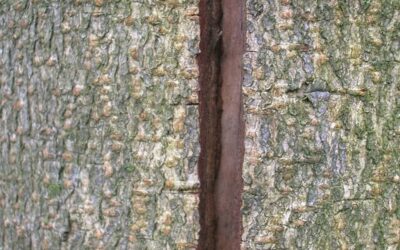Blog Topics
Throughout Northern Virginia and surrounding areas, homeowners and property owners have been calling us with the same question, “What’s wrong with my tree?” They’re noticing that the ends of some of the branch tips on their deciduous trees have leaves that are turning brown and curling, with some smaller branches eventually falling to the ground.
Some have guessed the cause: the 17-year cicadas.
In this article, we’ll cover:
- the 17-year cicadas and their impact on trees,
- how the cicadas are causing flagging,
- why branches may fall to the ground, and
- what, if anything, you can do.
Keep reading for more information!
A Recap on the 17-Year Cicadas
The 17-year cicadas emerged this year as expected. One thing you can count on is that the cicadas know what year it is and when to emerge! The 2021 swarm is called “cicada brood X” (the X stands for the Roman numeral for ten so it’s pronounced “cicada brood ten”).
The cicadas spent most of the summer flying around, making a lot of noise and receiving plenty of attention. Their goal was to eat and reproduce before they died, and they only had a few months in which to do so. By now, most of the females have laid their eggs to ensure that the next generation will survive – and emerge in another 17 years.
FAQs About Cicadas & Their Impact on Trees
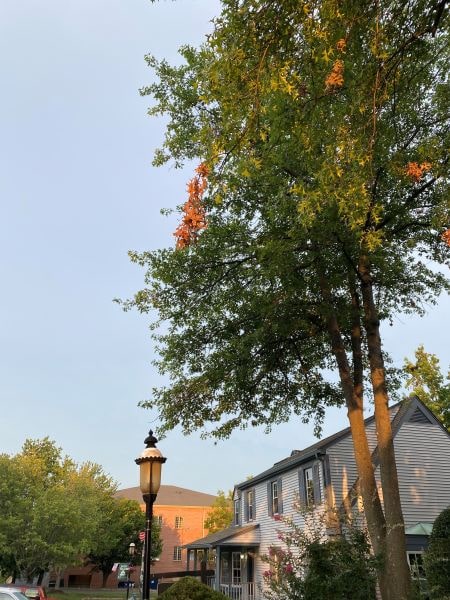
A tree in front of Old Brogue Irish Pub in Great Falls, VA shows signs of flagging.
Many people were worried about the health of their trees when the cicadas were flying around eating (seemingly) everything. However, cicadas really only impact younger trees (or sometimes plants or vines) – more on that below – so don’t pose a danger to most trees.
The phenomenon that many tree owners are seeing now – brown leaves and dropping branches – is a result of cicada behavior back when they were flying. It’s caused by the way female cicadas lay their eggs.
Where do cicadas lay eggs?
Female cicadas lay their eggs inside tree branches. If there are enough branches available, the cicadas will be picky about which branches they choose. They will often opt for:
- Branches near the top of the tree canopy
- Branches exposed to the sun
- Smaller branches (usually around the width of a pencil)
- Deciduous trees, particularly hardwoods such as oaks, beech trees, and maples
Due to the sheer number of cicadas that emerged this year, however, the females might not have had the opportunity to be so choosy, as nesting options were limited. Therefore, they might also have laid eggs in shrubs, conifers, vines, and other plants.
How do female cicadas lay their eggs?
Female cicadas have an ovipositor that enables them to cut a slit in tree branches and then insert the eggs into this tiny slot.
Does cicada egg laying harm trees?
The cut tissue and eggs disrupt the vascular system of the tree, restricting the flow of water and nutrients to anything beyond where the eggs are inserted. This causes the tip of the branch to either break off and fall, or, if it remains connected, the leaves will turn wilt and turn brown.
The brown leaves at the end of a branch are called “flagging,” as it looks like small flags are attached to the ends of the branch.
What happens after the branch tips die?
This whole process is quite natural. The branch drops to the ground, where the recently-hatched cicada nymphs crawl out of the branch and tunnel below the surface, not to be seen again for 17 years.
If the branch stays attached, the nymphs will fall from the branch to the ground. A much more dangerous start to life, but one that is necessary for them to be able to get below ground.
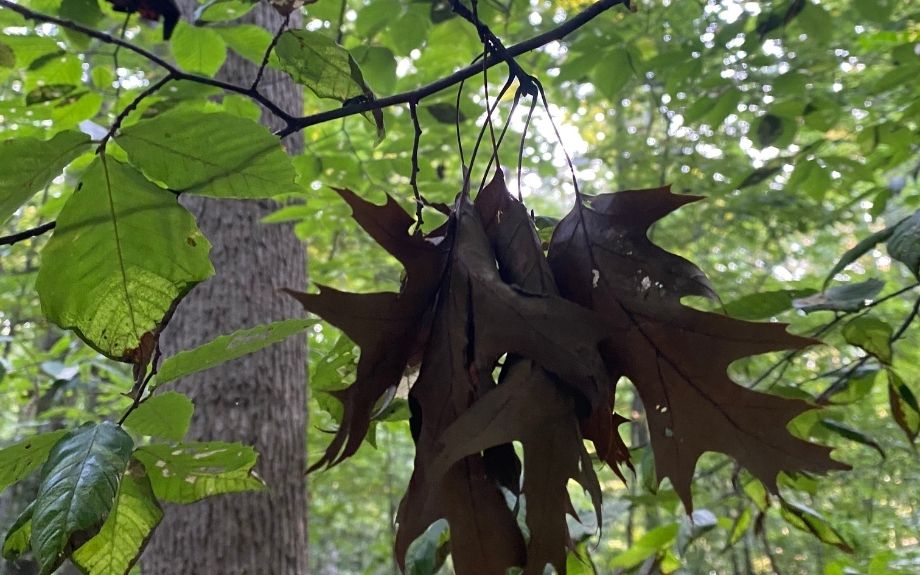
Dead leaves caused by cicada eggs on a tree in Riverbend Park, Virginia.
Is flagging (dead branch tips) a problem for my tree?
The branches that fall are considered a natural form of pruning. So, while the flagging may be a cosmetic issue for a while, it should not cause any long-term damage to a mature tree.
Is cicada egg-laying damaging for young trees?
Young and small trees are the exception. While cicadas pose no danger to older, established trees, smaller trees or trees that have been planted in the last 2 years can suffer from the damage cicadas cause.
While a pencil-sized branch on an older tree is only part of hundreds of branches that make up the mature tree, the same-sized branch can be a main part of a younger tree’s structure. If a main branch is damaged or falls off, the young tree will have a harder time recovering. If several branches on a young tree are impacted, the chance of the tree recovering is even less.
How can I protect young trees from cicada damage?
The best option for preventing damage to young trees is to cover them with a protective netting that will keep the cicadas away from the leaves and branches. The trees must be covered by early summer, however, as cicada eggs take 6 to 8 weeks to develop and will begin to hatch in late July or early August.
If my tree doesn’t show signs of flagging, does that mean that it doesn’t have cicada eggs?
Not necessarily. Not all trees react by flagging.
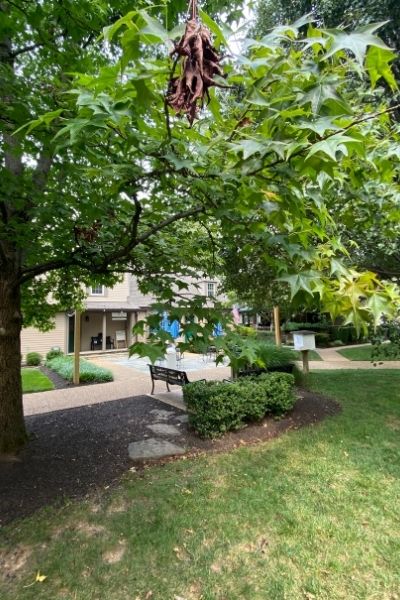
Signs of flagging on a tree in front of Old Brogue Irish Pub and Great Falls Creamery in northern Virginia.
Should I do anything to protect my mature trees?
No, cicadas and their eggs are a normal part of the ecosystem.
Should I schedule corrective pruning for trees that have flagging?
In some cases, corrective pruning can be beneficial. We recommend that you wait until after August 1st before removing any affected branches, as this will give the nymphs time to hatch and tunnel into the ground.
Are trees in forested areas more affected?
Actually, cicadas prefer urban and suburban trees, as they get more sunlight thanks to the space between trees. In forested areas, you’ll often only see flagging in sunnier spots.
What should I do with the fallen branches?
Leave the branches where they have fallen for a while, or move them to a moist area near some vegetation. This gives the cicada nymphs a chance to survive and move underground.
More Questions About Cicadas & Trees?
If you have any additional questions or want to schedule a tree consultation, contact us at Riverbend Landscapes & Tree Service today!
Give Us a Call at 703-402-9366
If you'd like help with your trees or landscape, have any questions, or would like to schedule an appointment with one of our Certified Arborists, please give us a call. We'd love to hear from you!

